Show Boat

Brief Synopsis
Cast & Crew
James Whale
Irene Dunne
Charles Winninger
Paul Robeson
Helen Morgan
Helen Westley
Film Details
Technical Specs

Synopsis
Cap'n Andy Hawks's show boat the Cotton Blossom arrives in New Orleans. Andy's daughter Magnolia, a gifted singer, meets Gaylord Ravenal and they make believe they are in love. While rehearsing, 'Nolia's good friend, Julie LaVerne, and her husband, Steve Baker, are accused of miscegenation and are forced to quit the show and leave town. 'Nolia and Gay take their places and, because their romantic involvement onstage mimics their real feelings, they are a hit. Pete Gavanaugh, who caused Julie's ostracism when she refused his advances, then writes to Andy to expose Gay as a murderer who was let off on a verdict of self-defense.
After a successful run of their show, Gay and 'Nolia marry with Andy's blessing, even though 'Nolia's mother Parthy objects to the marriage because of Gay's questionable past. A year later, 'Nolia gives birth to Kim during a storm while Gay is away playing cards. Gay returns the next morning and asks 'Nolia to move to Chicago. Initially, the family lives well at the Palmer House while Gay bets on horses, but his money quickly runs out and they are forced to move. When Elly and Frank, former members of the show boat, inquire about a shabby room for rent from which the present tenants are being evicted, they discover the tenants are 'Nolia and Gay. Gay then deserts 'Nolia because he is ashamed that he cannot provide for her and Kim. 'Nolia then performs at the Trocadero after Julie, now an alcoholic, quietly quits so that her old friend 'Nolia can get work. Parthy and Andy then arrive at the Palmer House on New Year's Eve in search of the Ravenals, and Andy discovers 'Nolia singing at the Trocadero.
Although the crowd is not receptive to 'Nolia's lyrical voice, Andy gives her support from the audience and she is a success. Soon 'Nolia is an international star. Years pass and she retires from the stage, after which Kim follows in her footsteps. When Kim opens on Broadway, 'Nolia recognizes Gay, who is posing as the stage doorman. After the encore, Kim invites her mother to sing and Gay joins her in song.

Director
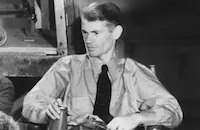
James Whale
Cast
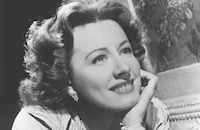
Irene Dunne

Charles Winninger

Paul Robeson

Helen Morgan

Helen Westley
Queenie Smith

Sammy White

Donald Cook

Hattie Mcdaniel
Francis X. Mahoney
Marilyn Knowlden
Sunnie O'dea
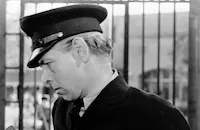
Arthur Hohl
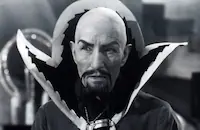
Charles Middleton

J. Farrell Macdonald
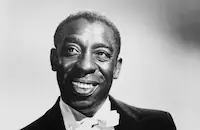
Clarence Muse
Patsy Barry
Charles Wilson
Mae Beatty
Stanley Fields
Stanley J. Sandford
Mary Bovard
William Alston
Marguerite Warner
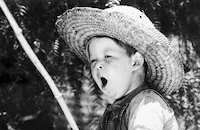
Bobs Watson
Jane Keckley
Isabelle Lamal
Betty Brown
Kathleen Ellis
June Glory
Tom Ricketts
Gunnis Davis
Harold Nelson
Patti Patterson
Betty Roche
Grace Cunard
Maidel Turner
Anna Demetrio
Marilyn Harris
Jimmy Jackson
Ricca Allen
Maxine Cook
Monte Montague
Lois Verner
Artye Folz
Barbara Bletcher
Helen Hayward
Harry Barris
Maude Allen
Frank Whitson
Eddy Chandler
Lloyd Whitlock

Lee Phelps
Frank Mayo
Edward Peil Sr.
Edmund Cobb
Al Ferguson
Daisy Bufford
Dorothy Grainger

Barbara Pepper
Renee Whitney
Alma Ross
Jeanette Dickson

Arthur Housman

Forrest Stanley
Selmer Jackson
George Hackathorne
Max Wagner
James P. Burtis
Billy Watson
Delmar Watson
Harry Watson
Ernest Hilliard
Jack Mulhall
Brooks Benedict
Elspeth Dudgeon

E. E. Clive
Helen Jerome Eddy
Don Briggs
Leroy Prinz
Harold Waldridge
Georgia O'dell
George H. Reed

Eddie Anderson
Theodore Lorch
Matthew Jones
Jack Latham
Flora Finch
Helen Dickson
D'arcy Corrigan
Ann Bupp
Crew
Zoë Akins
Victor Baravalle
Russell Bennett
Leighton Brill
Leighton Brill
Ed Brymer
Billie Burke
Bernard Burton
Doris Carico
John P. Fulton
Charles Gorman
Charles D. Hall
Oscar Hammerstein Ii
Oscar Hammerstein Ii
Charles K. Harris
William Hedgecock
Joe Howard
Alan Jones
Ted Kent
Jerome Kern
Gilbert Kurland
Carl Laemmle
Carl Laemmle Jr.
Jack Latham
Carl Leas
Helen Mccaffrey
Joseph A. Mcdonough
Mike Mclaughlin
John J. Mescall
Harry Mieneke
Jack Pierce
Maurice Pivar
Leroy Prinz
Katherine Stanley
Mary Stewart
Joe Torillo
Vera West
Western Costume Company
James Whale
P. G. Wodehouse
Doris Zinkeisen

Videos
Movie Clip





Hosted Intro
Film Details
Technical Specs

Articles
Show Boat (1936)
By today's standards, Show Boat's handling of racial issues like miscegenation and the stereotypical "shiftless darkies" seem embarrassingly outdated; at the time, though, the warm friendship between Magnolia and Julie, the "tragic mulatto," was considered enlightened. And even today, Paul Robeson's dignified portrayal of Joe, and his powerful voice, still make a strong impression.
The son of a former slave, Robeson was a towering figure, both physically and intellectually. He won a scholarship to Rutgers University, where he was both an All-American football star, and a Phi Beta Kappa honors graduate. As a performer, he could handle Shakespeare and Eugene O'Neill as well as musicals. The producers of the original stage version of Show Boat wanted Robeson for the role of Joe, but he was unavailable, although he eventually played the part in London, and in the 1932 Broadway revival. Critics singled out his "Old Man River" as the highlight of the film.
Hattie McDaniel, who would later become the first African-American to win an Oscar (as best supporting actress for Gone With the Wind, 1939), also played a stereotype in Show Boat, as she did in many films. But as always, she played the comically domineering mammy-figure with spirit and style. Both she and Robeson, who played husband and wife, brought star quality to their subordinate roles.
Show Boat had the advantage of having several members of the original Broadway production in its cast. Helen Morgan as Julie, her voice tremulous with emotion, was deeply affecting in songs such as "Bill," and "Can't Help Loving Dat Man." Charles Winninger reprised his role of Captain Andy. And Irene Dunne, Allan Jones, and Hattie McDaniel had also played in various productions of the show. James Whale (Frankenstein, 1931) might have seemed an odd choice to direct, but critics praised his pacing, and his meticulous attention to detail. The result, as more than one critic pointed out, "is nothing less than splendid."
Director: James Whale
Producer: Carl Laemmle Jr.
Screenplay: Edna Ferber (novel), Oscar Hammerstein II
Cinematography: John J. Mescall
Music: Robert Russell Bennett, Jerome Kern
Art Direction: Charles D. Hall
Principle Cast: Irene Dunne (Magnolia Hawks), Allan Jones (Gaylord Ravenal), Charles Winninger (Cap╒n Andy Hawks), Paul Robeson (Joe), Helen Morgan (Julia La Verne), Helen Westly (Parthy Hawks)
BW-115m. Closed Captioning.
by Margarita Landazuri

Show Boat (1936)
Quotes
Did you understand the moral of the play, my dear?- Mother
Oh,sure, ma. Did you see how he kissed her?- Young Girl
Yes! I hardly thought that was in the best of taste!- Mother
I gits weary / An' sick o' tryin' / I'm tired o' livin' / An' scared o' dyin' / But Ol' Man River / He jes' keeps rollin' along!- Joe
You wouldn't call a man a white man that had Negro blood in him, would you?- Steve
No, I wouldn't; not in Mississippi. One drop of Negro blood makes you a Negro in these parts!- The Sheriff
I just shell them peas.- Joe
You ain't pickin' them up.- Queenie
No, but I could've if you didn't. I could do a lotta things if it was necessary.- Joe
Then why don't you?- Queenie
It ain't necessary.- Joe
I could say that my name was Bonaparte, and show you Napoleon's tomb; that wouldn't make him my grandfather would it?- Parthy
Trivia
"Ah Still Suits Me" was written especially for the film to give Paul Robeson a larger role.
In the scene, where "Ah Still Suits Me" is sung, we can see an "Aunt Jemima Pancake Mix" box standing on the Table. Aunt Jemima played the role of Queenie in Show Boat (1929) and on Broadway in the original Ziegfeld production.
Carl Laemmle was ousted from Universal by a new takeover just after this film was completed. He retired from films the day after its release, as did his 28-year-old son, who never produced another film.
Special permission had to be granted from the Hays Office in order to retain the famous "miscegenation" sequence in the film. Miscegenation was banned as a film subject and the scene had been excluded from the 1929 film version.
Because of copyright problems involving a real "Cotton Blossom" show boat sailing the Mississippi in the 1930's, the name of the showboat in the film had to be changed to "Cotton Palace". This required omitting the second half of the opening chorus, in which the townspeople sing about the boat while the stevedores continue singing about their daily work, and the "cotton blossom" growing on the levee. The section sung by the stevedores is still heard in the film.
Of all the films that he directed, this was James Whale's favorite.
Notes
This film's title card reads "Edna Ferber's Show Boat." Ferber's novel was serialized in Woman's Home Companion (Apr-August 1926). Many actors from the 1927 Florenz Ziegfeld-produced Broadway musical recreated their roles for the film, including Charles Winninger, Helen Morgan, Francis X. Mahoney, and Sammy White, who made his film debut in this production. According to modern sources, Paul Robeson was originally wanted for the role of "Joe" in the 1927 stage version but was unavailable. He did, however, appear in the 1928 London production with Cedric Hardwicke and Colin Clive, and the 1932 Ziegfeld Broadway revival. "Ol' Man River" later became Robeson's signature song. Irene Dunne, Allan Jones and Hattie McDaniel also starred in earlier productions.
This film was the last feature presented by Universal president and founder Carl Laemmle, who then sold his interest in the company to J. Cheever Cowdin and Charles R. Rogers. Hollywood Reporter announced on October 12, 1935 that Universal was negotiating with M-G-M to borrow Dave Gould to stage the dances in this film, however, LeRoy Prinz was eventually hired. According to the Call Bureau Cast Service, Prinz also appeared in the film in the role of a dance director. In 1933, Universal began negotiating for Winninger and Robeson to appear in this film. According to a modern source, production was originally planned for 1933 under Frank Borzage's direction, with a script by Jo Swerling. Dunne, Winninger, Robeson and Russ Columbo were set to star. Reportedly, in 1935, initial screenplays by Zoë Akins were scrapped, and the final shooting script was completed by Oscar Hammerstein II. Akins is listed as contributing writer in Universal production files at the USC Cinema-Television Library. According to Daily Variety, this film started production on December 9, 1935 without a male lead. Wilbur Evans, John Boles, Michael Bartlett and Francisco Del Campo were still being considered for the role of "Ravenal" as of 6 Dec. Universal had hoped to borrow Nelson Eddy from M-G-M, but negotiations fell through. According to a news item in Film Daily on December 16, 1935, three hundred African-American actors were used in this production. Cameraman Alan Jones is not to be confused with actor Allan Jones.
In an interview in the New York Times on May 17, 1936, Irene Dunne said she regretted that her rendition of the song "Why Do I Love You?," sung during an automobile ride on a bumpy road, was cut from the film; her location rendition was much too "jerky," while her studio performance was much too smooth to match the scene. "Why Do I Love You?" remains in the film's orchestral background, however. Dunne made a personal appearance at the film's opening at the Radio City Music Hall in New York on May 14, 1936. The songs "I Have the Room Above Her," "Gallivantin' Around" and "Ah Still Suits Me" were original songs written by Jerome Kern and Oscar Hammerstein II for the film. According to a modern source, "Got My Eye on You" and "Negro Peanut Vendor's Street Cry," also written by Kern and Hammerstein for the film, were not used.
Modern sources also claim that W. C. Fields was considered for the role of "Cap'n Andy Hawks." Modern sources list Leon Shamroy as an uncredited cinematographer. Irene Dunne and Charles Winninger performed a radio version of Show Boat in a Lux Radio Theatre broadcast on June 24, 1940. Universal made a 1929 adaptation of the Ferber story, directed by Harry A. Pollard and starring Laura La Plante and Joseph Schildkraut. In 1951, M-G-M made a feature version of Show Boat, directed by George Sidney, that starred Kathryn Grayson, Ava Gardner, Howard Keel and Joe E. Brown (see below)

Miscellaneous Notes
Released in United States March 1975
Released in United States on Video March 14, 1989
Released in United States Winter January 1, 1936
Released in United States Winter January 1, 1936
Released in United States March 1975 (Shown at FILMEX: Los Angeles International Film Exposition (3-day James Whale Retrospective) March 13-26, 1975.)
Released in United States on Video March 14, 1989















